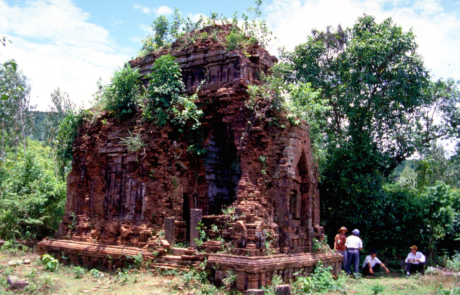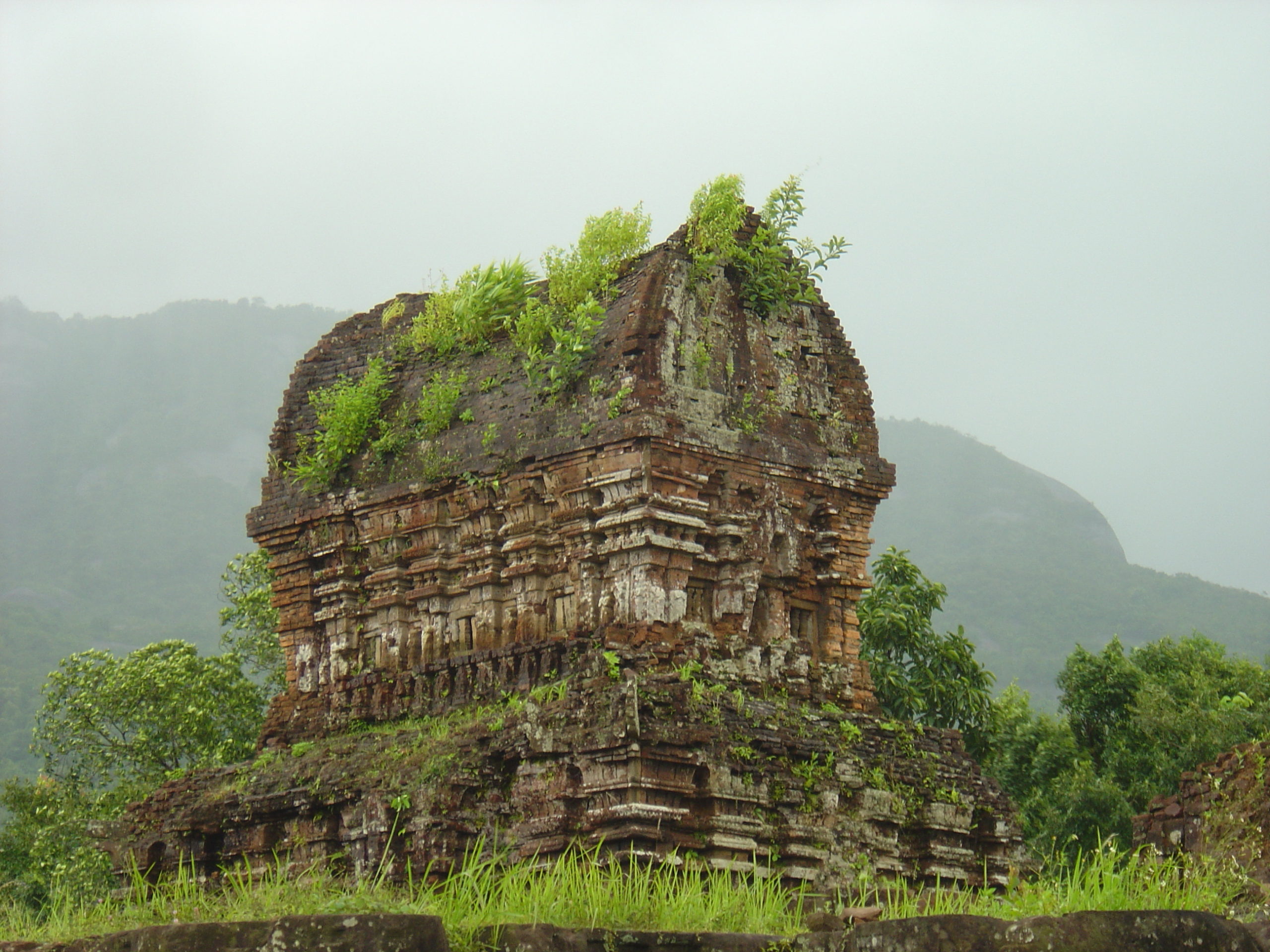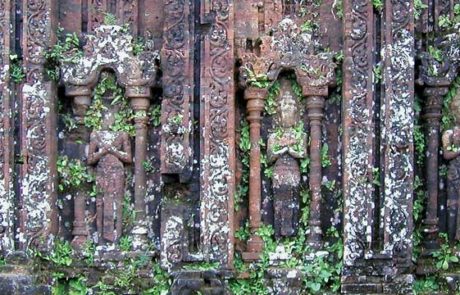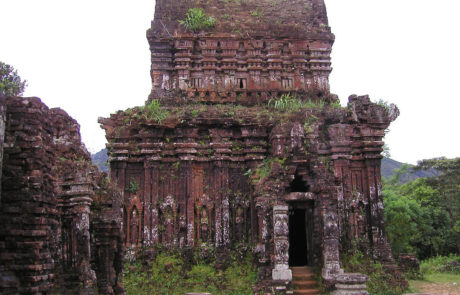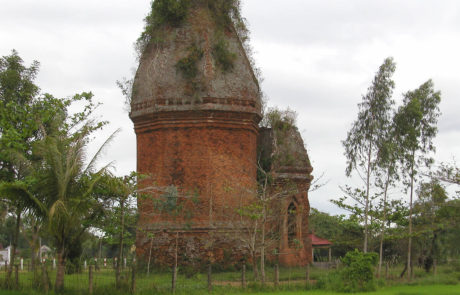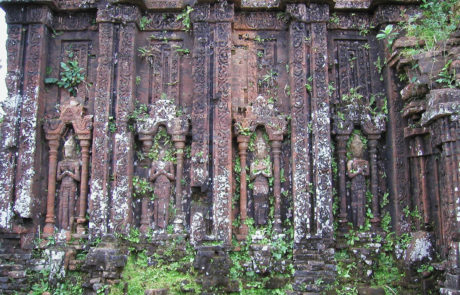My Son, Vietnam
Investing in international standards of conservation training to protect Vietnam’s oldest and largest ancient ruins
Along the mountainous coast of central Vietnam near the city of Da Nang, My Son Sanctuary exemplifies cultural appropriation at its most masterful. At this religious site and royal burial grounds of the Indigenous Champa Kingdom, which ruled this swath of Southeast Asia between the 4th and 15th centuries, Hindu art and architecture of the Indian sub-continent influenced My Son’s original seventy brickwork temples built to honor the Hindu god Shiva. Finished with some of the finest sandstone bas-reliefs found anywhere in the world, each culminated in an imposing tower symbolizing Mount Meru, the mythical home of the Hindu gods.
The largest and oldest ancient ruins in Vietnam, and perhaps the longest inhabited archaeological site in Indochina, My Son offers testament to the technological sophistication of Cham people over a thousand years of continuous building and worshipping. Subsequent centuries however left the region in economic decline even before the Vietnam War, during which the Vietcong turned My Son into their field headquarters. Bombing raids destroyed or severely damaged all but twenty of these magnificent shrines, though most still standing retain their elaborate friezes.
Conservation challenges at My Son ranged from landmines, illegal looting and limited understanding of the Cham culture to erosion of those figurative carvings when Global Heritage Fund joined the effort. We worked with a private institution and local governmental bodies to provide urgently needed stabilization and restoration to help save these remaining temples, some on the verge of collapse. A detailed topographic map of the entire site was produced, as was photographic and drawing documentation of the archaeological sites and architectural objects including pottery.
Our three-year project also emphasized on-site training of Vietnamese archaeologists, architects, geologists, geophysicists, surveyors and draftsmen who acquired international standards of conservation training. Laborers, some of whom were previously farmers, gained valuable new skills too. Community outreach extended to a joint initiative with Vietnam’s World Heritage in Young Hands program in schools around Quang Nam Province, to increase awareness of My Son Sanctuary for Vietnamese youth and their parents. This was complemented by efforts to educate locals about their heritage and its potential to generate lasting economic and cultural benefits.


